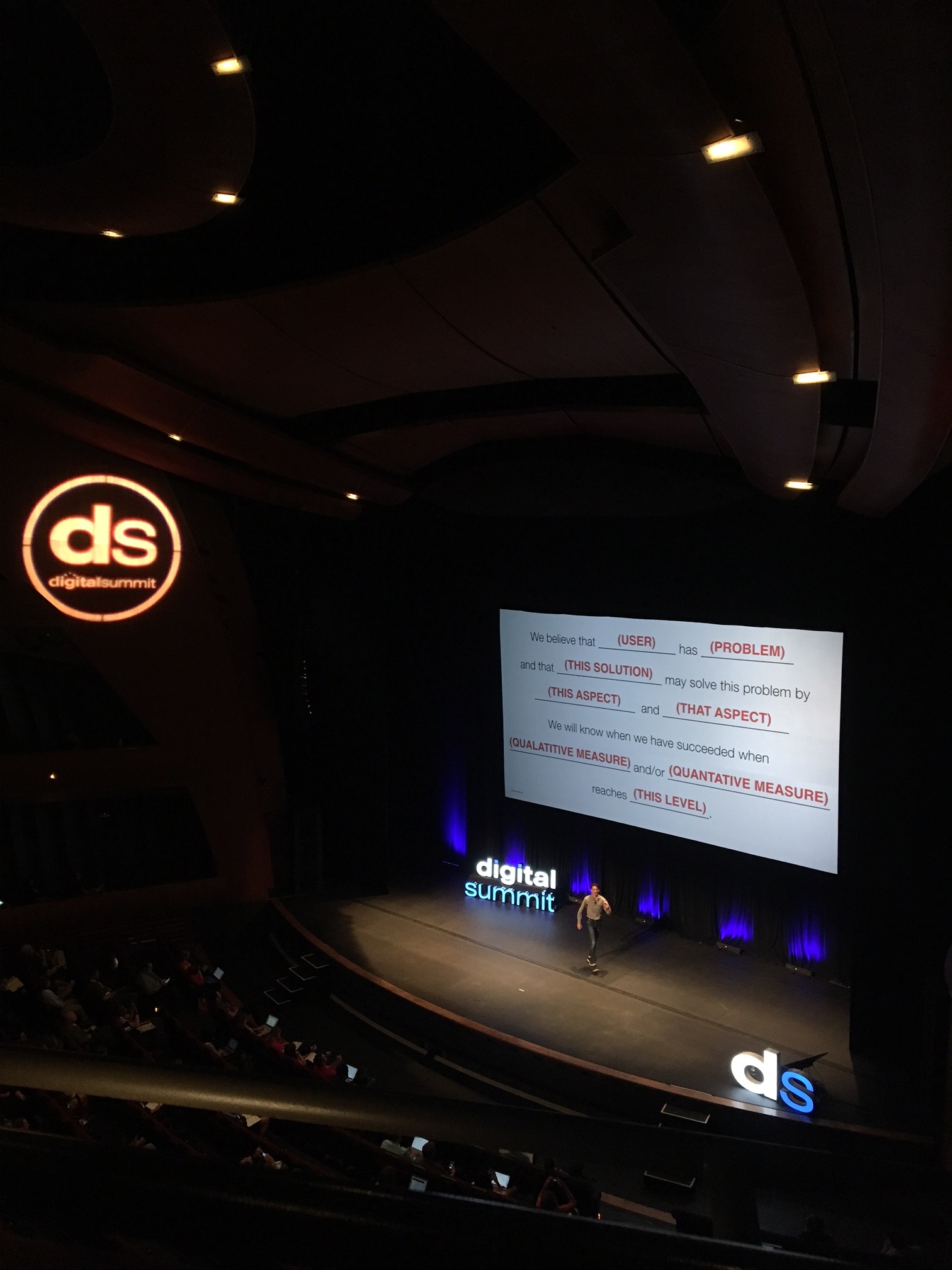Our Denver-based team had the pleasure of attending the Denver Digital Summit again this year. The Digital Summit is great way for our team to connect with, learn from and share insights with super smart digital folks in Denver and around the country.
Over the last three years, the key session topics has remained similar--mobile, social, content, big data. While these topics were present this year, we noted four broader themes throughout the presentations and the many conversations we had with other attendees.
Start with Your Audience
Every old-school, “traditional” advertiser knows that to sell something to a customer, you need to tap into their emotional rationale (however irrational it may be!). But somewhere along the way, likely through a combination of data overload, instant communication methods and a more global reach, digital marketers forgot that or thought they didn’t need it.
But they’re coming around. Faced with performance plateaus and near limitless channels, devices and ad units, digital marketers are understanding the need to truly know their audiences and connect with them on a deeper level. Because as quickly as technology is changing and impacting digital processes, there’s one constant that has never and will never change--the customer.
This theme played out as the main topic in several sessions, like Michael Salamon’s “Stealing Design Thinking: Five UX Techniques for Marketers.” And identifying your target audience was mentioned by nearly every speaker, regardless of the channel or approach they were discussing.
Michael Salamon shares his MadLib approach to defining audience personas.
It’s Not Marketing for the Masses
In Seth Godin’s incredibly entertaining and insightful keynote, he introduced the idea of the “Minimal Viable Audience.” This, he posited, is the smallest audience a brand or marketer would be satisfied in reaching. We all know the target audience is never everyone, but it also shouldn’t be the masses. Rather, focus on a niche audience--the early adopters, the late bloomers, the outsiders, the weirdos, the fanatics. The people likely to become so dedicated to your brand that they tattoo it on their skin!
Seth stated that identifying these target audiences doesn’t have to be an exceedingly complex process. Simply apply this statement to each audience: “People like us, do things like this.”
People like us do things like [attend nerdy marketing conferences and listen to awesome presentations by Seth Godin]
A More Analytical Approach to Content
“In data we trust” has been one of our mantras for some time, and we’re certainly not alone. Every digital marketer knows that using accurate data to plan, test and measure campaigns is how you achieve success. This approach, however, isn’t always applied as diligently to content as it is to other channels or marketing efforts.
Not for NatGeo, though. The presentation by Dan Gilgoff, Executive Editor for Digital at National Geographic, showed how the outdoor and adventure publication uses analytics to workshop article titles, optimize social media messages and truly guide their entire editorial calendar.
And before you say, “but they’re a massive publisher with loads of interesting content, what could my ecommerce brand take away from that?” remember that today, regardless of what you sell, you need to act like a publisher. To reach your audience and engage them enough to drive sales, you have to first get in front of them on the channels they use, and then provide some value beyond your actual products, services or ideas.
Email Is NOT Dead
Okay. So I doubt anyone has actually said that email is dead. It’s more like, email is that second cousin that dropped out of med school to join the circus and worked their way up from scooping elephant poop to being the ringmaster and married the lead acrobat and even though they’re doing great and really happy, no one in the family wants to acknowledge their existence.
Too much? Of course, but you get the point. Unless a conference is specifically about email, it’s typically absent from the agenda or, at most, placed in the dungeon presentation room half a mile down the conference hall.
The thing is, email kills it. It always has and continues today, even with the shinier smart devices and SnapChats and VR apps of the world. And this is especially true for ecommerce merchants. According to a presentation by John Thies, CEO of Email on Acid (or is that what happened to the second cousin?!), 68% of teens prefer receiving communication from businesses via email and email delivers a 40:1 ROI.
It was refreshing to see so many sessions dedicated specifically to email marketing optimization and so many other presenters discussing the benefit of email within the customer journey.
There were loads more learnings over the two-day conference, but these themes seemed to permeate the majority of the sessions and mixer conversations. Did you attend DSDenver? What were you main takeaways from the event? Share your experience on our Facebook page.


![People like us do things like [attend nerdy marketing conferences and listen to awesome presentations by Seth Godin]](https://images.squarespace-cdn.com/content/v1/543aa7dde4b039cd17f5d910/1498834117957-H8SXIOA5JCQIEVOYALPV/Seth+Godin+-+Denver+Digital+Summit)